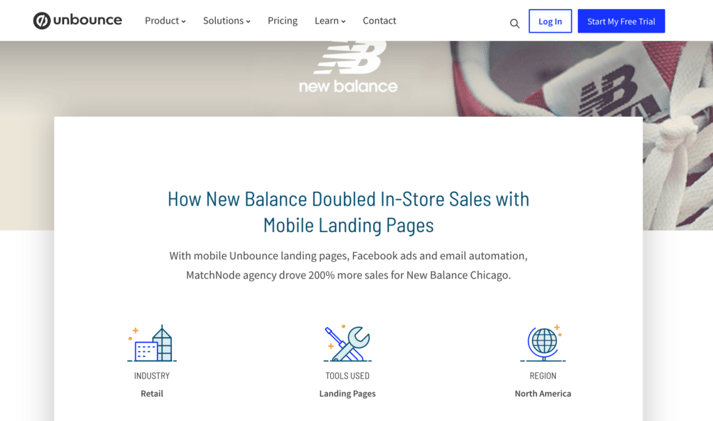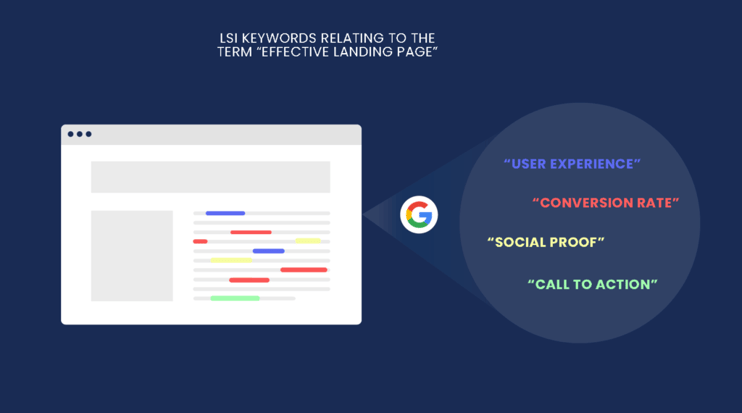Two of the biggest challenges for SaaS marketers are lead generation and getting high-quality traffic. In an increasingly competitive market with rising cost per acquisition, SEO is one of the best (and most affordable) ways to get ahead and drive more traffic to your SaaS website. However, there is no magic formula to achieve overnight success. Search Engine Optimisation is a complex, ongoing process with many components and needs a clear strategy from the start.
The goal of this article is to provide a straightforward explanation of the best SEO practices that you can use in your business today. Read on to learn how to cut through the noise and boost your SaaS website visibility and traffic by implementing SEO.
On-Page Elements
Let's start with the on-page SEO. It has two main goals: to make your site easily crawled by Google and to improve user experience to keep the users on your site longer.
The most important factor is your title tag. Make it relevant to the topic with your keyword at the beginning. The second tip is to use SEO-friendly URLs. Ideally, they should be short and include your target keyword. Next, add one H1 tag for every page (WordPress does this automatically) and wrap your subheadings in H2 tags. Drop your target keyword in the first 100 words.

Use multimedia such as screenshots or images and make sure they have the correct alt text. Add at least 3 internal links to every post you publish (a good internal linking structure helps Google with indexing your site) and use outbound links to the websites with high authority. Optimising your meta description doesn't directly lead to better rankings but it deserves attention as it can increase your click-through rates. It also helps with describing the content of your page.
Finally, create long-form content to boost dwell time (the length of time a user spends looking at your webpage). It might take more effort to produce an in-depth guide to your product rather than a short blog post but it's been proven that long-form content outperforms short content significantly.
Technical SEO
Explaining all of the techniques to get the technical SEO right is beyond the scope of this article. However, we'll mention the most important things that need consideration. An optimised site architecture helps search engines find and index all of the pages on your website. In addition, it also helps users to find what they need quickly. Keep your site structure simple and ensure users can reach any page on your site in 4 clicks or less.
Next is page speed. The first and easiest way to ensure page speed doesn't hurt your rankings is by compressing your images. Other best practices are more sophisticated and include using clean code, upgrading your hosting, activating browser caching (doesn't work for first-time visitors) and implementing CDN to use servers in the location of your visitors.
You also need to be aware of duplicate content. It's the content that appears on more than one website address. To avoid duplicate content, make sure to look out for multiple versions of the same page and use 301 redirects to link them back to the original page.
The alternative tactic is using the canonical tag. By using rel=canonical in your code, you'll tell the search engines that you have duplicate content on your site but the original page is tagged. Finally, creating truly unique, original content is the best strategy when it comes to avoiding duplicate issues and driving more traffic to your site.
Continue reading if you want to learn how to write informative content for your visitors.
Create Content Focused on the User
SEO and content marketing go hand in hand. By creating original and value-adding content, you increase your chances of ranking high in the search engines. Content also educates your potential customers on how to use your product and what are the main benefits. Finally, it helps you to demonstrate the value of the solution you are offering.
By explaining and showing how your product saves time and money, you are in a better position to build trust and speed up the nurturing process.
Here is a great example of Unbounce helping New Balance to drive more sales with effective landing pages. Notice how they used a writing style that's both actionable and straight to the point.

How to write high-quality content that ranks remarkably well? The first rule is to write for your readers, not the algorithms. Avoid keyword-stuffing, repetitive headings and too many generic anchor texts. Instead, think about your customers and the problems they face that your product solves.
The important thing to remember here is to primarily talk about the solutions for your customer's problems, not the main features. The value of your product and the experiences it creates are undoubtedly important. But if the prospects don't see how it solves their problems, it won't be enough. That's why your content should always be customer-centric. Consistency also helps, but not at all costs.
The days of creating content just for the sake of it are long gone. In 2020 and beyond, quality over quantity will become even more significant. And a good variety of well-written and relevant content will always be key to driving more traffic to your website.
Optimise your Content with SEO in Mind
Using the right keywords
Readability is just one part of the content creation process. Next is content optimisation. The first step is using the right keywords based on the topic. We've already mentioned that stuffing isn't a viable strategy anymore. Instead, use keywords in the text naturally and include semantically related keywords. These keywords are important because they let the search engines better assess the content on your webpage.
For example, let's say you just wrote a blog post on how to create an effective landing page. Google will scan your page to see if the term “effective landing page” naturally occurs in your content. In addition to that, it will also look for related terms. These are called LSI keywords and may include words like “user experience”, “conversion rate”, “social proof” or “call to action”.
If Google finds LSI keywords in your texts, it will make a data-driven decision that the actual content inside your blog post is relevant to the topic which will, in turn, further boost the ranking of your page.
 Thanks to backlinko for inspiration on this image.
Thanks to backlinko for inspiration on this image.
Proper keyword research is a must and should ensure that the chosen keywords are relevant to both your SaaS business and your customers. It will also help you to understand keyword search volume (how much is your keyword used in organic search) and determine the keyword competition (how hard it will be to rank).
Our tool of choice for using the right mixture of keywords in our content is SEMrush writing assistant. Check it out here. For keyword research, we use either SEMrush or Ahrefs.
Creating Intent-based Content
Another important thing is to optimise content based on the search intent of your target audience. The three main intents are informational (users are seeking information for a specific question), navigational (seeking a specific website), and transactional (seeking to make a purchase). It's your job to create and optimise content for each of them. You should also keep in mind that different keywords will relate to different intents.
There is not a lot you can do when the users look for a specific page. However, the other two intents are useful for creating relevant content. Informational queries usually happen higher up in the funnel and provide you with limitless options on how you can educate your prospects (guides, useful tips, infographics).
Content for transactional intent, on the other hand, is more about your product and should address the main pain points while providing a comprehensive description of your solution.
There is also a fourth additional intent which is a commercial investigation. In this instance, the searcher will look for the specific product or service but isn't sure which solution suits his needs. Examples of commercial investigation search queries include “best keyword research tool”, “SEMrush vs Ahrefs” or “ahrefs review”.
The most important takeaway here is the fact that SERPS are ordered to meet the users’ search intent (and their needs). This means that the best-ranking pages do well because their content provides a complete and perfect response to the initial user search intent.
However, intent-based content doesn't only bring benefits to your SEO strategy. It also positively impacts your conversion rates and helps you with staying up to date as Google continues to improve its algorithms to be even more user-friendly.
Conclusion
SEO is a great way for SaaS businesses to attract more users. We recommend starting with creating high-quality content for your target audience that's backed up by solid keyword research. The rest of the practices such as on-page optimisation and technical SEO will then become gradually easier to implement. And be patient when the results don't come tomorrow, SEO is a long-term game.
%20small.jpg)


